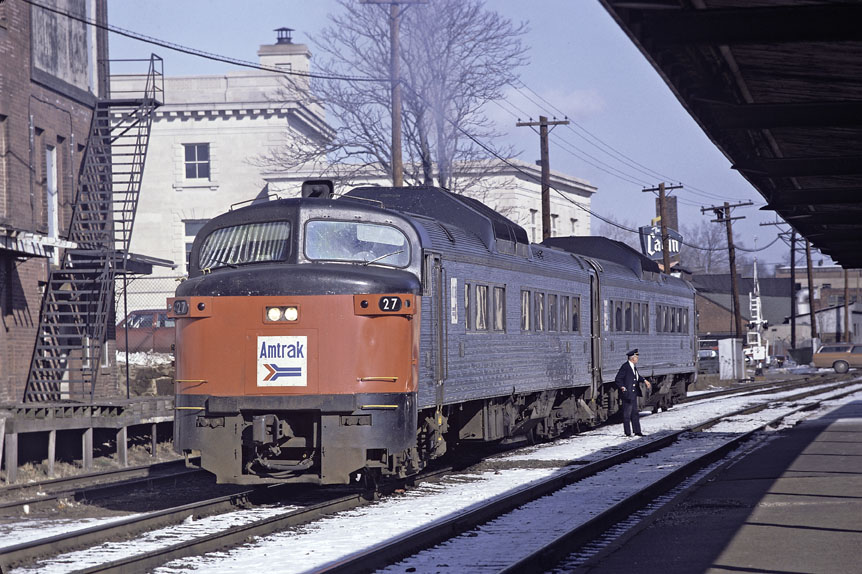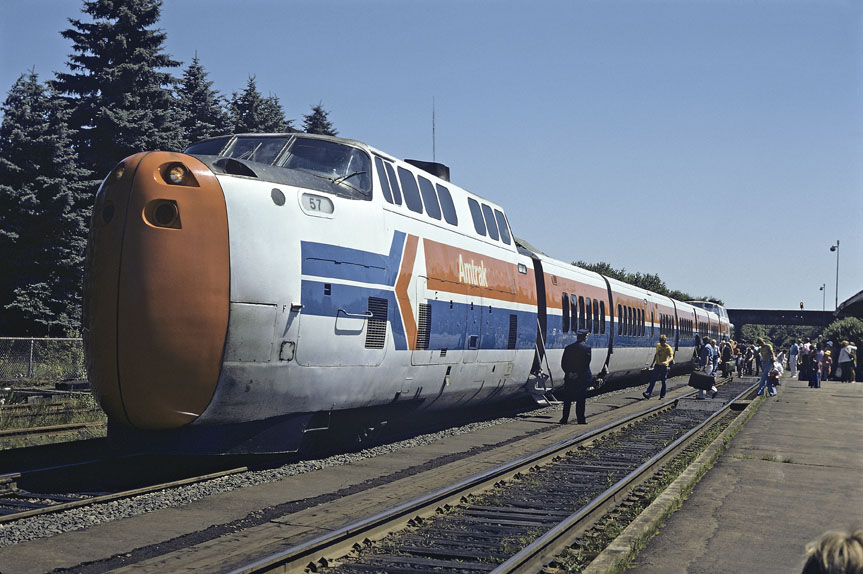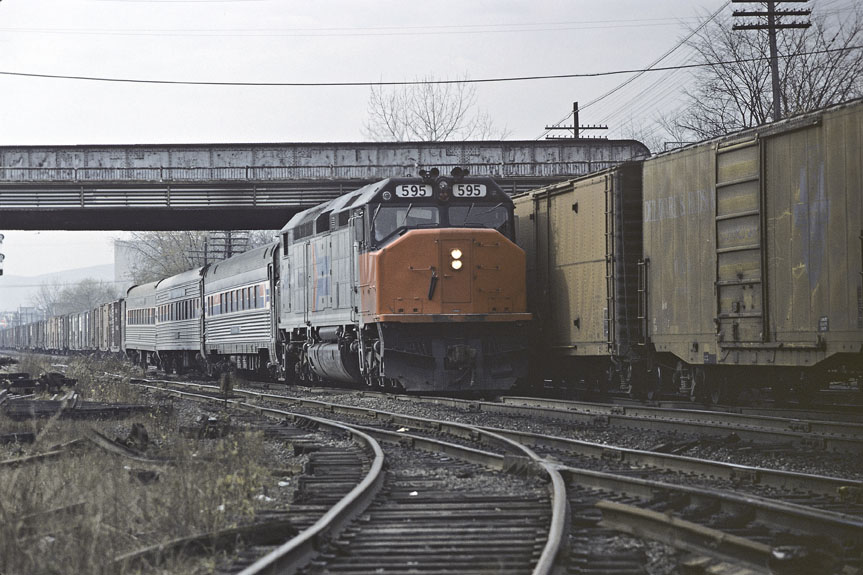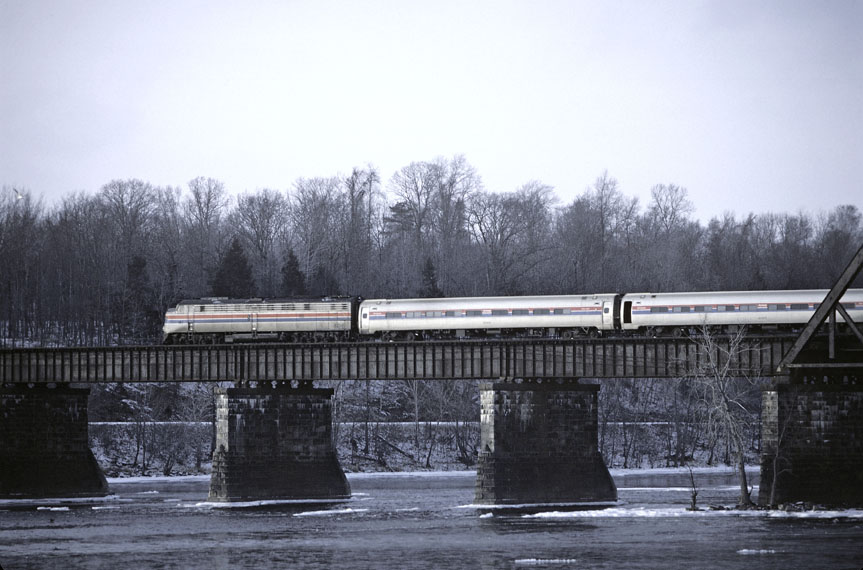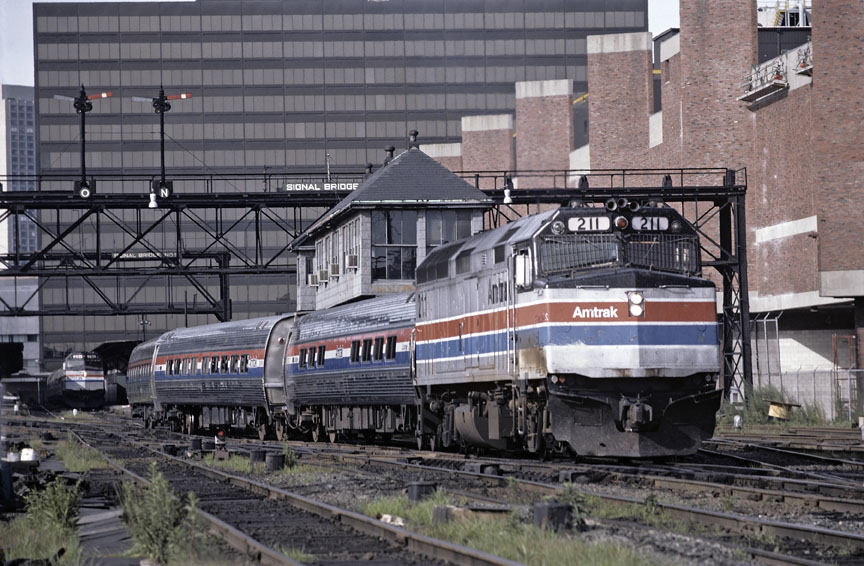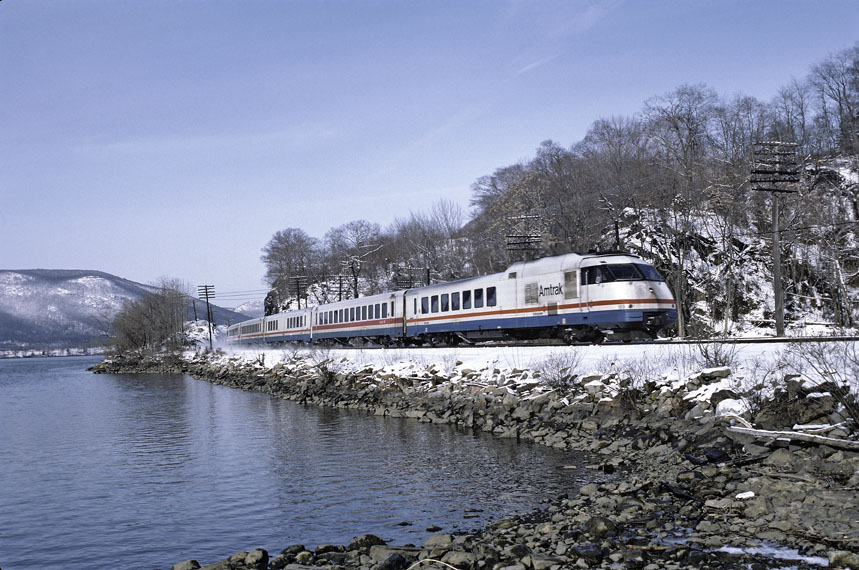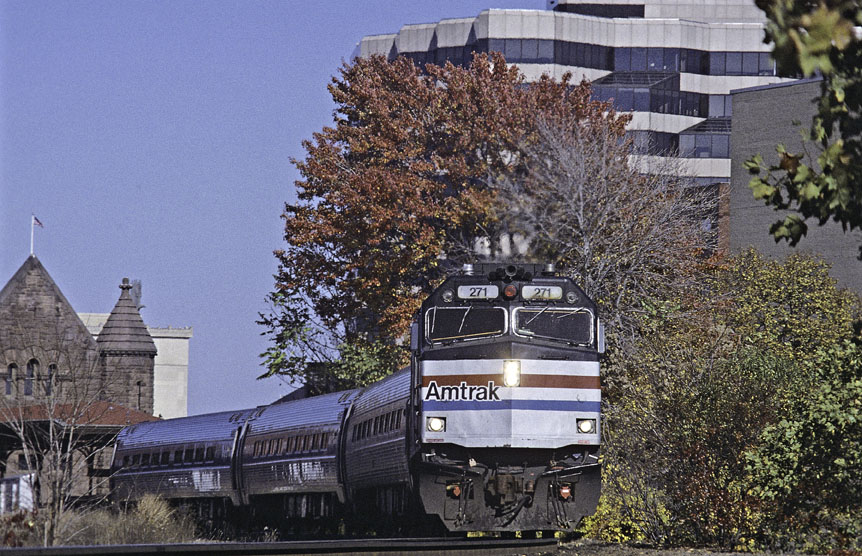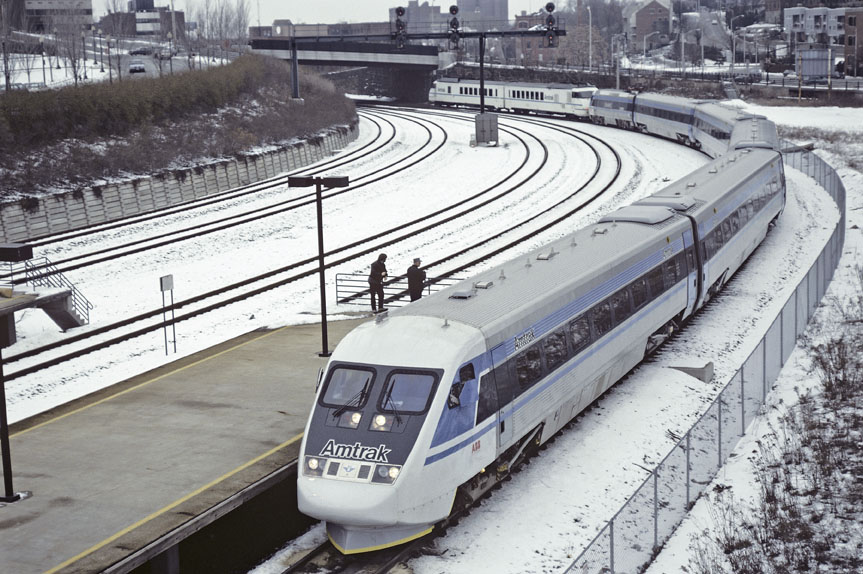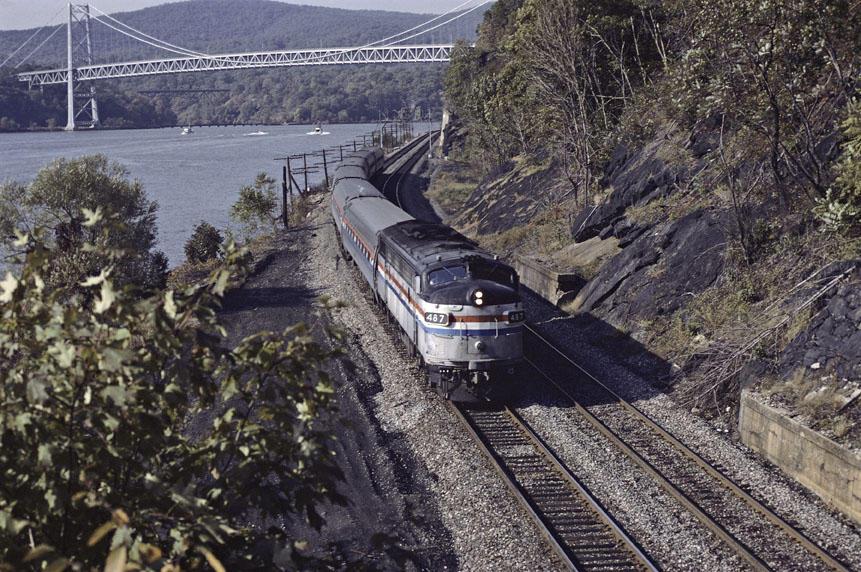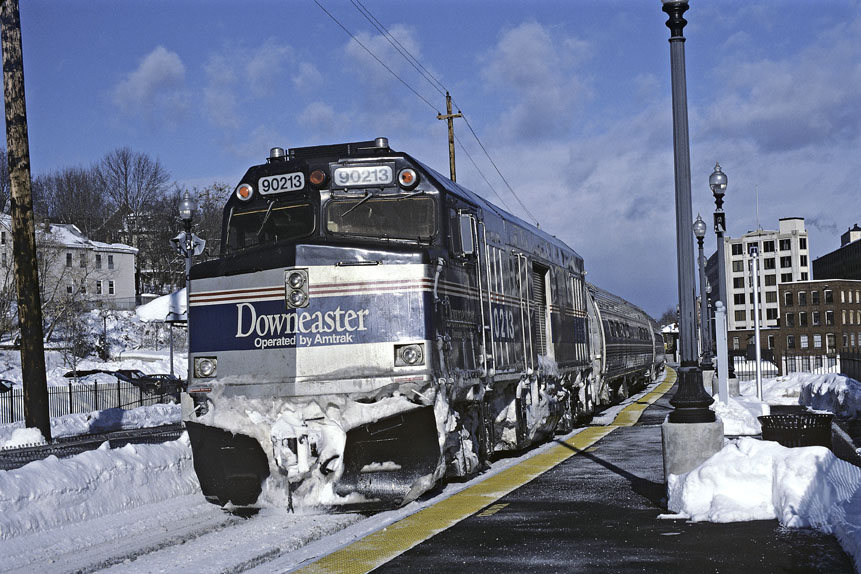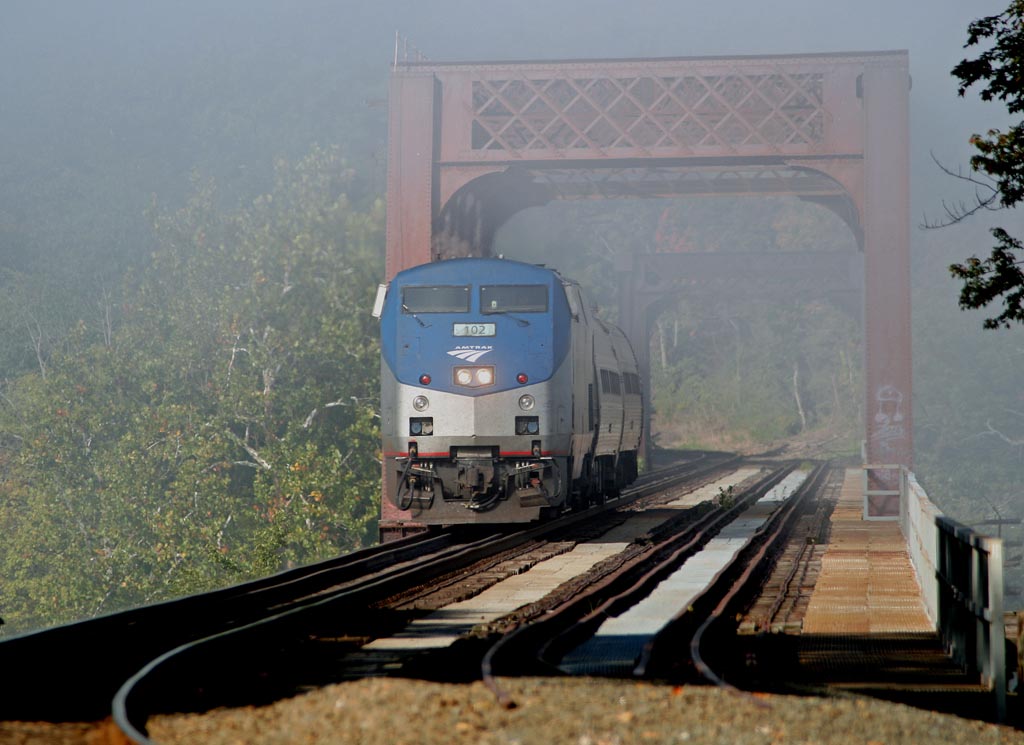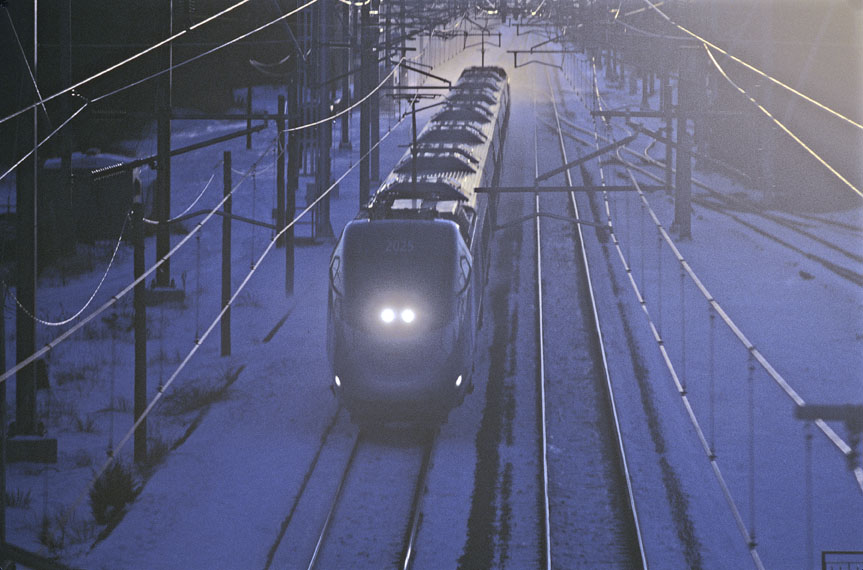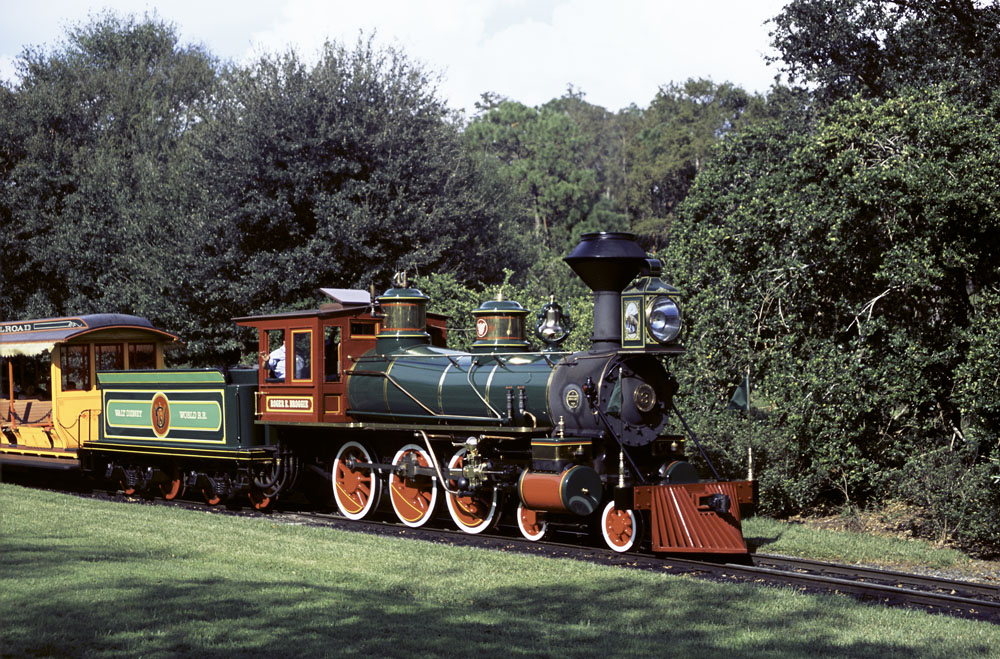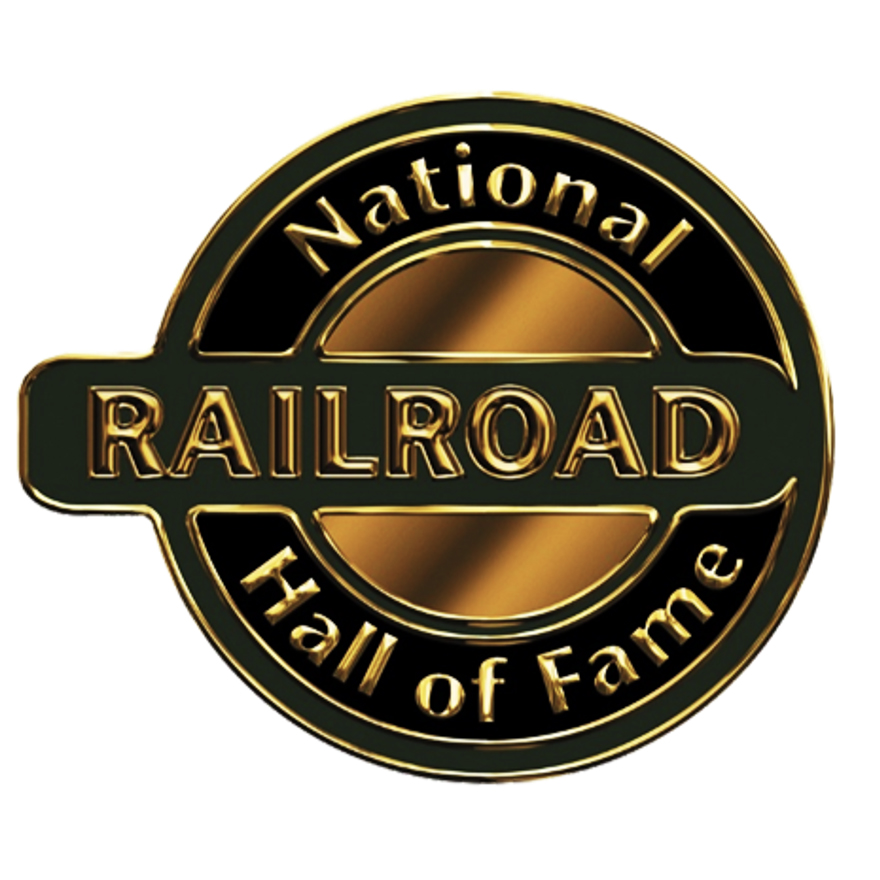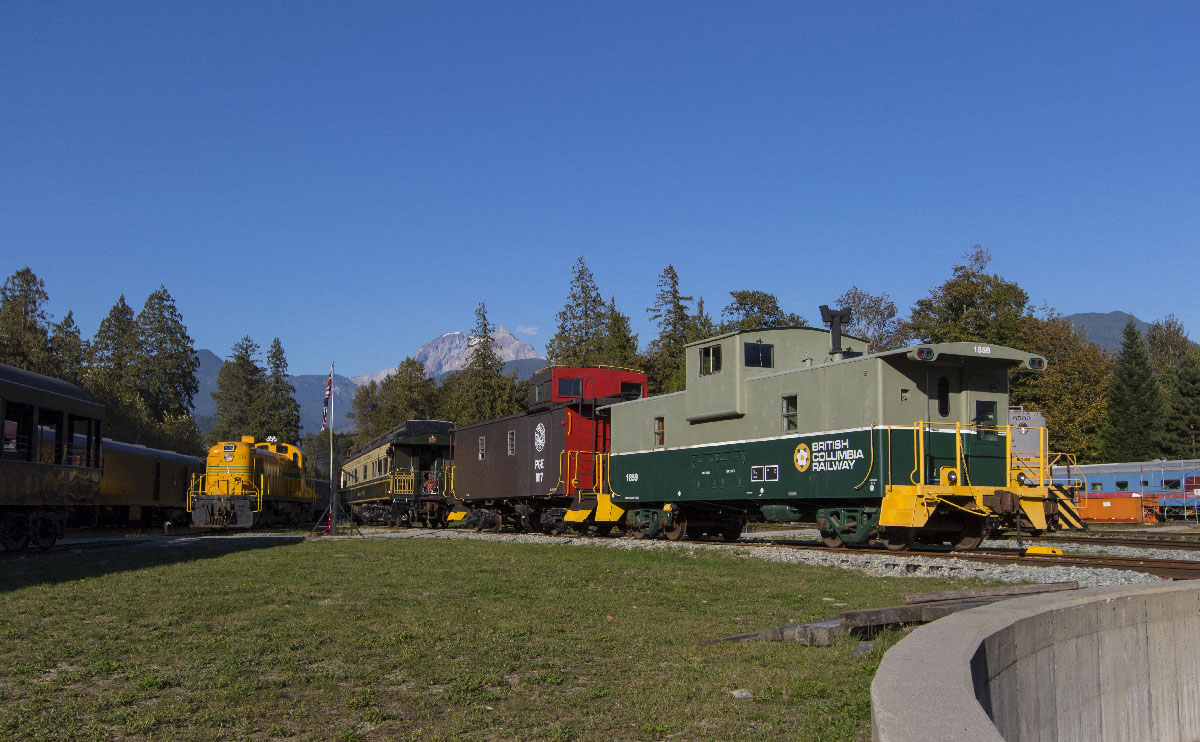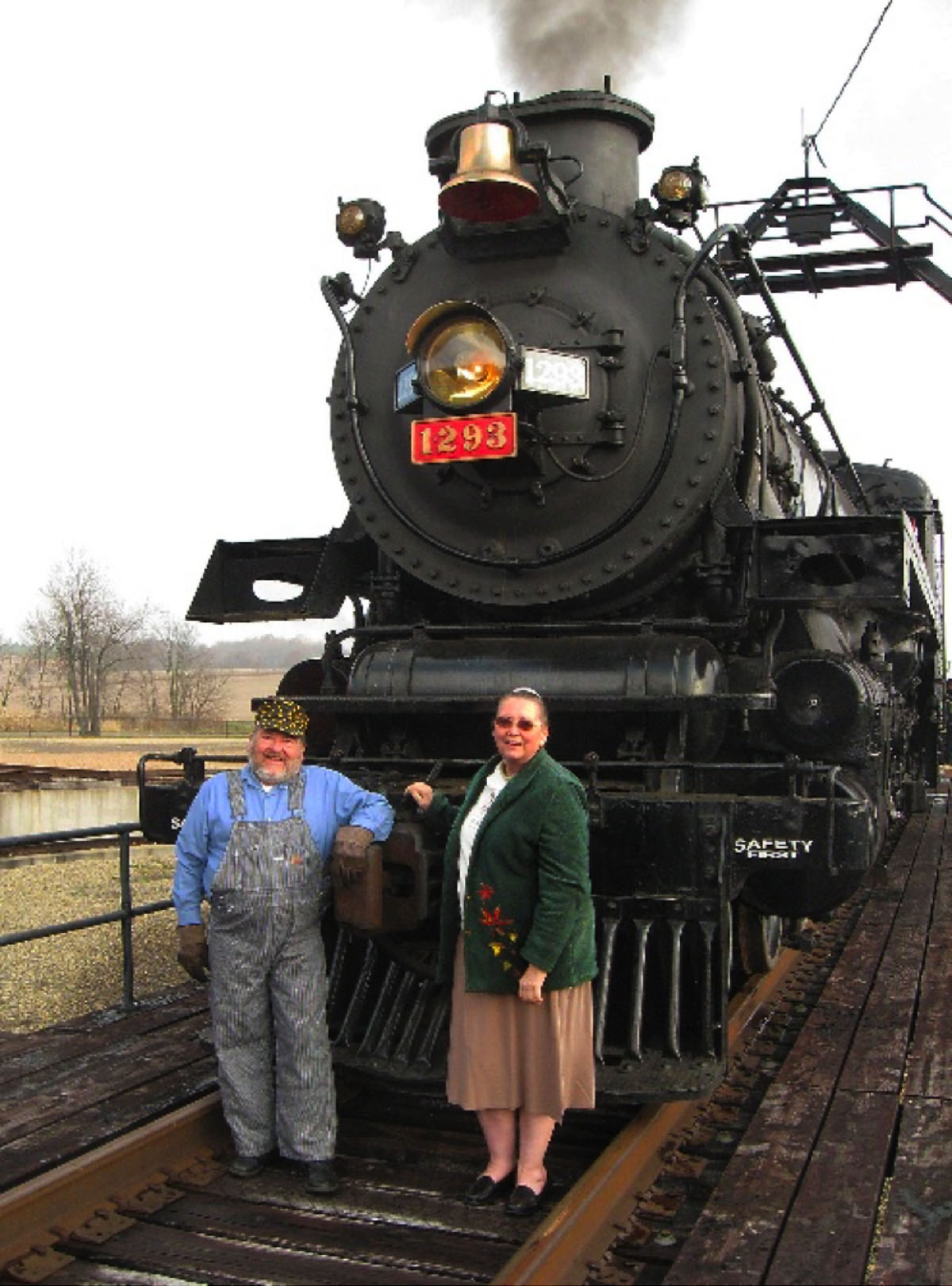Connecticut resident Bob LaMay has been photographing Amtrak in his native New England since the carrier turned its first wheel in 1971. We present a small sampling of his work over the decades.
For more on Amtrak’s 40th anniversary, pick up the
July 2011 issue of Trains magazine, which looks back on the five biggest changes in Amtrak’s history — and what might happen next.
Amtrak inherited from Penn Central these self-propelled Rail Diesel Cars with distinctive front ends built for the New Haven Railroad’s Roger Williams. Budd Co. delivered six RDCs in an A-B-B-B-B-A formation to the New Haven in 1956. The slapped-on Amtrak logo from this February 1975 view would be replaced four years later with the company’s red, white, and blue striping. The train is calling at Meriden, Conn., on its regular run between Springfield, Mass., and New Haven, Conn.
High speed in New England in the 1970s meant these turbine-powered trainsets built by United Aircraft, which sprinted between Boston and New York from 1969 to 1976. The two Turbotrains (Amtrak later bought a third set from VIA Rail Canada) achieved the route’s best-ever timings — 3 hours and 48 minutes between Boston and New York with four intermediate stops — but reliability problems ultimately doomed the equipment. A Turbotrain takes on passengers at Old Saybrook, Conn., on Aug. 12, 1974.
Amtrak’s first new locomotives were SDP40Fs built by General Motors in 1973 and 1974. The burly locomotive practically dwarfs this three-car consist of the Lake Shore Limited’s Boston section, seen passing a Penn Central freight at Pittsfield, Mass., in November 1975. The train is in its first year of operation. It restored passenger rail service from Chicago to New York and Boston over the former New York Central “Water Level Route.”
Amtrak inherited nearly 200 streamlined E8 and E9 passenger locomotives from 13 different railroads. By 1975, the roster had been pared to 113 active units, with about half sent through a rebuild program. Nevertheless, the E units’ days were numbered when rebuilt E8m No. 496 rolled across the Connecticut River bridge at Enfield, Conn., with southbound train No. 413 in January 1981.
Boston’s South Station remains the northern anchor of Amtrak’s Northeast Corridor operations. A diesel-powered “Metroliner Service” train departs for New York, pulled by one of Amtrak’s reliable and ubiquitous F40PH diesels (seen in the broad red-blue “Phase II” striping). Note the semaphores on the signal bridge and wooden control tower hidden behind the train in this August 1983 view.
A Turboliner kicks up snow as it follows the Hudson River’s east bank from Albany, N.Y., to New York City in December 1986. Amtrak’s seven RTL Turboliners, built in 1976 by California’s Rohr Corp., were a mainstay of New York-Albany-Buffalo Empire Service trains from the mid-1970s through the 1990s. They eliminated the need for an electric-to-diesel engine change out of New York City. Carded as the Electric City Express, this Turboliner is approaching Peekskill, N.Y.
One of the joys of New England is its fall foliage. The trees near the Hartford, Conn., train station are alive with color. An Amtrak NortheastDirect train for New Haven departs in October 1996 behind F40PH No. 271. The first of these rakish locomotives arrived from General Motors in 1976. Amtrak ultimately came to own 216 F40PHs (Trains magazine called the F40 “the diesel that saved Amtrak”) and they were the face of the railroad’s diesel-powered trains through the 1980s and into the 1990s, until GE-built P40 and P42s to displace them.
As a prelude to today’s high speed Acela Express service, Amtrak tested two types of European high speed trains, a German ICE trainset and this tilting X2000 train from Sweden. The demonstration equipment made revenue runs on the Northeast Corridor and toured other parts of the country. Pushed by two Amtrak Tubroliner power cars, the X2000 arrives at Providence, R.I., on Jan. 17, 1993.
The last cab units on Amtrak were FL9s, which led Empire trains between New York and Albany. The units, built by General Motors in 1957 for the New Haven Railroad, were equipped with third rail shoes for running in New York City rail tunnels as well as diesel prime movers. Amtrak leased five FL9s from Penn Central at startup, then bought seven more in 1976 when it acquired the Northeast Corridor. A 1979-80 rebuild program left six active FL9s, which powered Empire trains until the last of the General Electric-built P32ACDMs arrived in 1998. FL9 No. 487 leads train No. 62, the Niagara Rainbow, south along the Hudson River at Bear Mountain, N.Y., in October 1988.
New England passenger rail service got a shot in the arm in December 2001, when a new corridor was launched between Boston and Portland, Maine. Called the Downeaster, the trains revived a service that Boston & Maine had ended in 1965. On a cold Jan. 11, 2003, a northbound Downeaster slips out of Haverhill, Mass., 18 minutes after departing Boston’s North Station. The trailing car is a former F40PH locomotive hollowed out and converted into a baggage-cab car.
Amtrak’s corridor service between Springfield, Mass., and New Haven, Conn., is now the domain of two-car shuttle trains that make the run every couple of hours. The trains are supplemented by the New York-St. Albans, Vt., Vermonter and a daily through Springfield-Washington Northeast Direct train. A General Electric-built P42 diesel, Amtrak’s modern-day workhorse, emerges from the fog with a 2-car Shuttle as it rolls north across the long Connecticut River bridge at Enfield, Conn., in September 2009.
The age of Acela is artfully captured in this sunset view of Boston-bound train no. 2164 roaring through Old Saybrook, Conn., on Feb. 12, 2003. Amtrak’s speedsters began running in late 2000 and have changed the game for travelers between New York and Boston, capturing successively larger chunks of the air-rail market. For now, New England can claim the highest passenger-train speeds in the country, as the Acelas get up to 150 mph on brief stretches of track in Rhode Island and Massachusetts.





